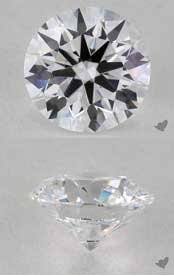Color
Diamond Color Grading System Analysis
Color Grading Standards
The international diamond industry employs the GIA D-Z Color Scale, categorizing diamonds from colorless (D) to light yellow/brown (Z). This system divides diamonds into five key groups:
D-F (Colorless): Requires 10X magnification for detection, containing <0.5ppm nitrogen
D Color
E Color
F Color
G-J (Near Colorless): Detectable only in face-down comparison with masterstones
G Color
H Color
I Color
K-M (Faint Yellow): Noticeable yellow tint visible to untrained eye
J Color
K Color
While yellow remains the most prevalent diamond color, brown hues are frequently observed in nature. Current gemological research indicates that this chromatic manifestation primarily arises from plastic deformation-induced lattice distortions during diamond formation, often interacting with trace nitrogen impurities . The structural irregularities create vacancy clusters or dislocation networks that absorb specific light wavelengths, producing the characteristic brown tones. Notably, nitrogen atoms may act as catalysts rather than direct chromophores in this process
N-Z (Light Color): Significant color impact on brilliancecolor impact on brilliance
Color Assessment Protocol
Professional evaluation requires:
Standardized Lighting: Illuminant D65 (6500K) with 5500-6500 lux intensity
Neutral Background: White or gray comparison surfaces
Facet Analysis:
Table-up observation for crown reflections
Pavilion-side examination for light leakage
Fluorescence Testing: UV-induced color changes measured on GIA scale (None to Very Strong)
Optical Performance Metrics
ParameterD-F GradeK-M GradeReflectance (%)97.5-98.589.2-92.1Brilliance Index100 (Reference)63-78Fire Intensity3.2-3.8 (×10³ sr)1.9-2.4 (×10³ sr)
Special Color Phenomena
Brown Tones: Caused by plastic deformation and nitrogen clusters
Fluorescence Impact: Strong fluorescence (>3) may reduce value by 5-15%
Color Zoning: Layered color distribution requiring >3mm uniformity for premium grades














